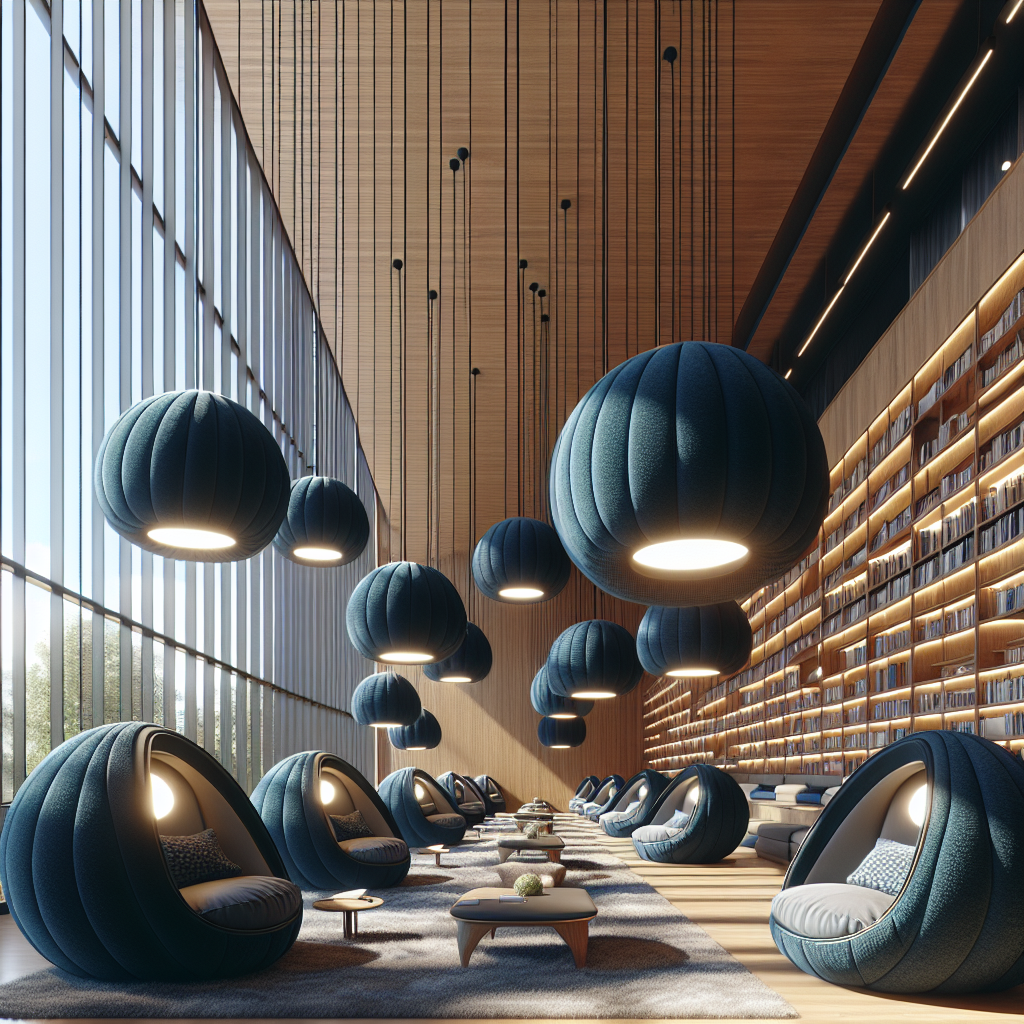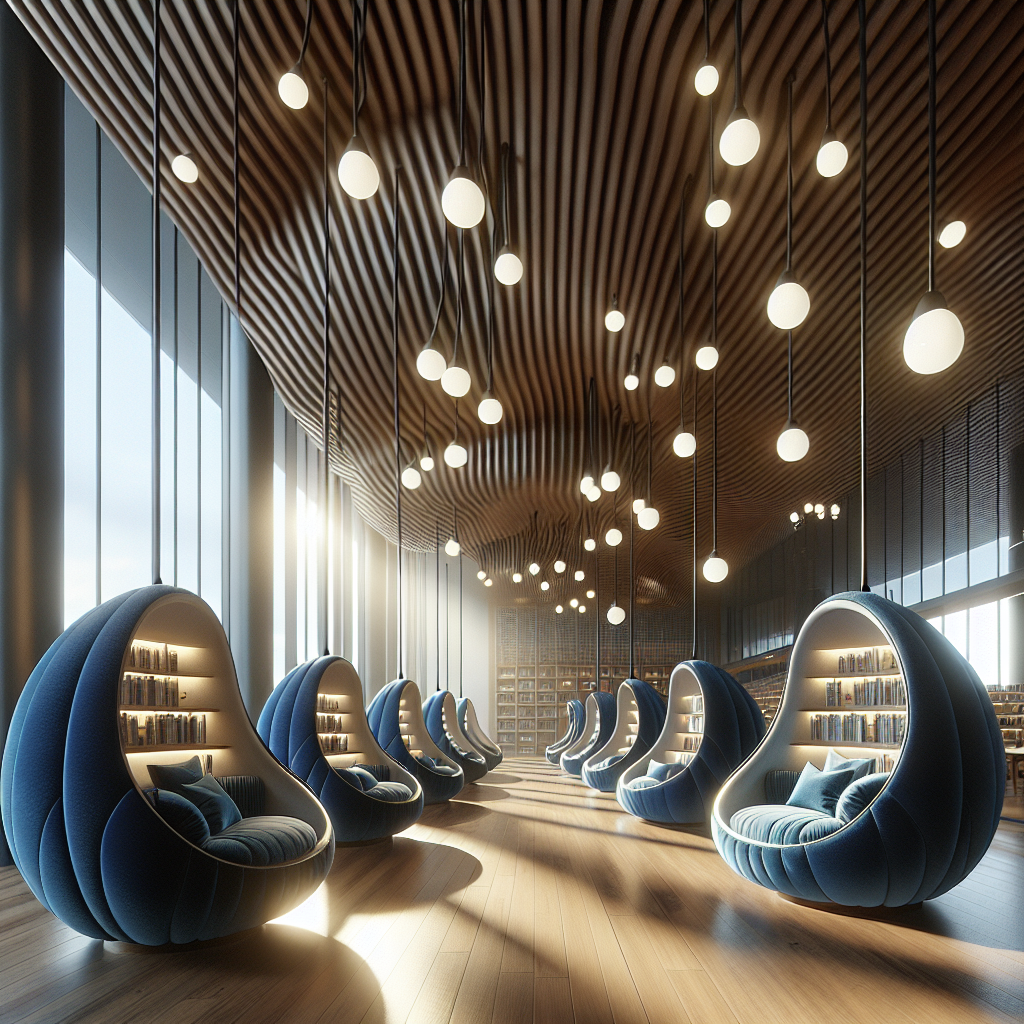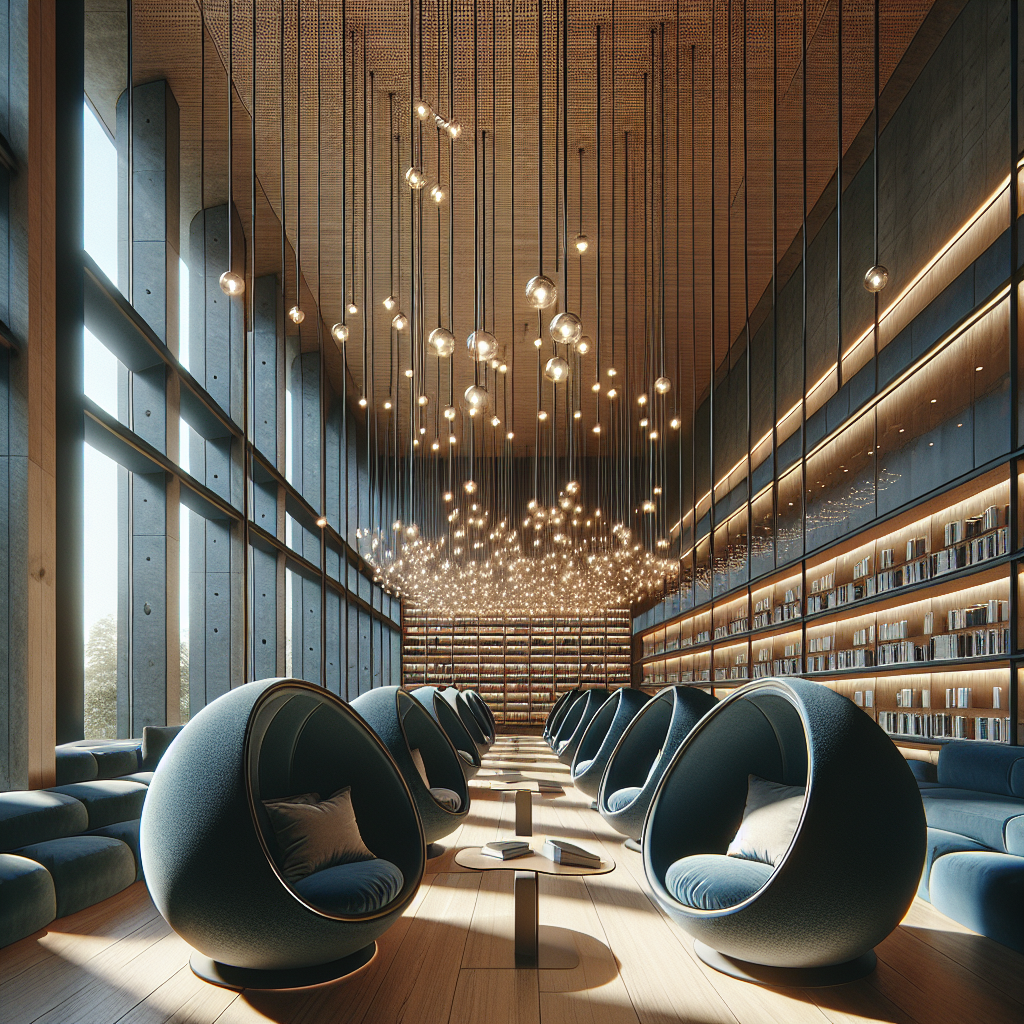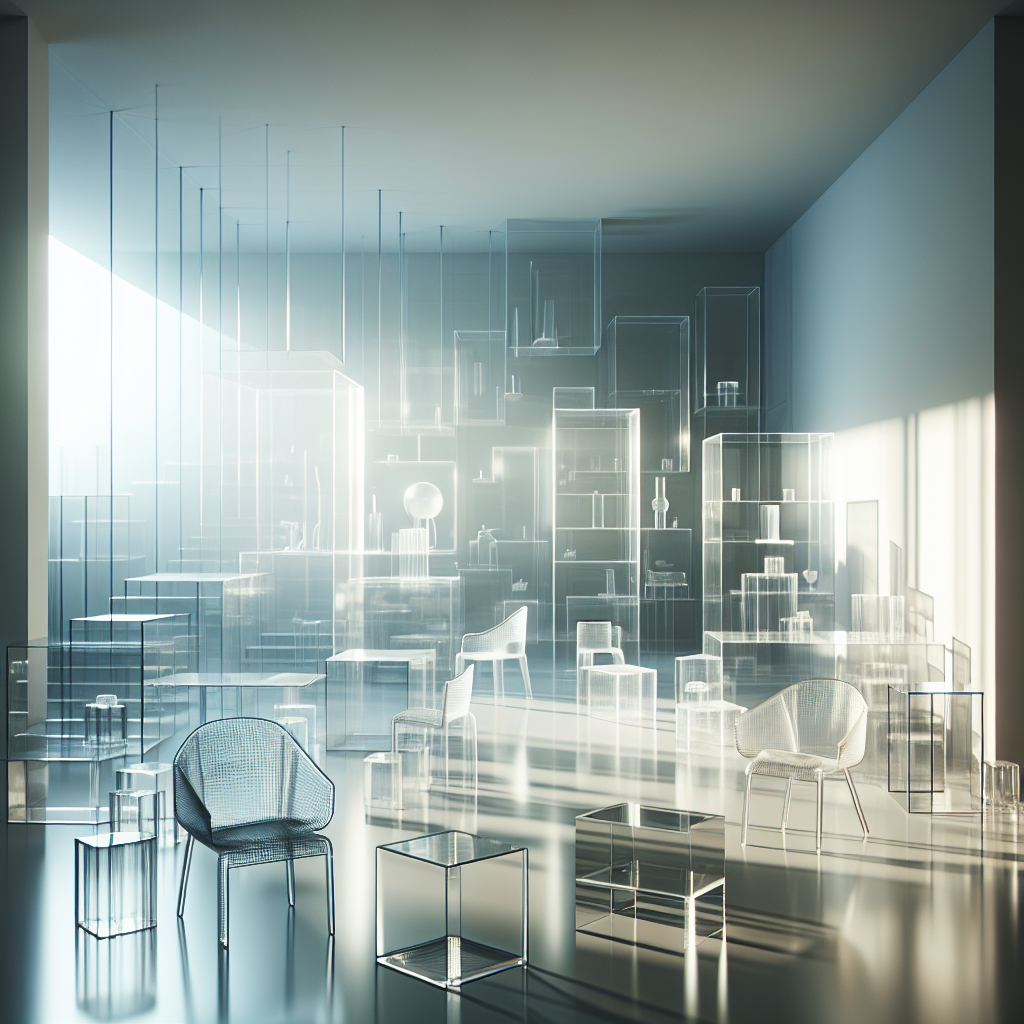Floating reading pods: in libraries plush spheres suspended from ceilings

Floating Reading Pods: Plush Spheres Suspended from Ceilings Transforming Library Spaces
Libraries, historically revered as quiet sanctuaries of knowledge, are evolving dramatically in the contemporary design landscape. The latest innovation captivating architects and interior designers alike is the introduction of floating reading pods—plush, spherical retreats suspended gracefully from ceilings. These futuristic cocoons not only redefine the aesthetic and functional dimensions of library interiors but also profoundly enhance the reading experience by offering unparalleled comfort and privacy.
The Rise of Floating Reading Pods: A Blend of Innovation and Comfort
The concept of floating reading pods emerges from a growing trend toward creating immersive, personalized spaces within public institutions. As modern libraries transition from traditional repositories of books to dynamic hubs of community engagement, architects are tasked with designing environments that cater to diverse user needs. The floating pod, a suspended sphere often upholstered in luxurious fabrics, offers a private haven within the communal space, encouraging focused reading and contemplation.
These pods typically feature plush interiors lined with sound-absorbing materials, creating an acoustic oasis that insulates readers from ambient noise. Suspended by robust yet visually discreet cables, the pods gently sway, offering subtle movement that has been shown to enhance cognitive engagement and relaxation. The seamless integration of technology within these pods—such as adjustable lighting, integrated speakers, and wireless charging stations—further enriches the user experience, reflecting broader trends in smart home technology and responsive design.
Architectural and Design Elements: Crafting the Perfect Pod
The architectural appeal of floating reading pods lies in their harmonious blend of form and function. Crafted from sustainable materials such as recycled textiles, natural fibers, and biodegradable foams, these pods align with contemporary demands for eco-conscious design. Their spherical shape, inspired by organic forms found in nature, resonates with principles of biophilic design, which emphasize the connection between human well-being and natural environments.
The exterior of these pods often showcases minimalist aesthetics, featuring smooth, matte finishes in muted earth tones or vibrant hues, depending on the library’s overall design scheme. Internally, designers prioritize tactile comfort, employing plush velvet upholstery, ergonomic seating, and adjustable cushions to accommodate various reading postures. Strategically placed LED lighting systems allow readers to customize brightness and color temperature, enhancing visual comfort and reducing eye strain.
Case Studies: Libraries Leading the Way
One exemplary implementation of floating reading pods can be observed at the recently renovated Helsinki Central Library Oodi in Finland. Renowned for its innovative approach to public space design, Oodi integrates several spherical pods suspended from its expansive wooden ceiling. These pods, upholstered in deep blue velvet, offer panoramic views of the library’s interior through discreetly placed windows, fostering a sense of openness while maintaining privacy. The pods’ gentle swaying motion, coupled with their soundproof interiors, creates an immersive reading environment highly praised by visitors and critics alike.
Similarly, the newly inaugurated Vancouver Public Library branch in Canada has adopted floating pods as central design elements. Designed by a collaboration of local architects and international designers, these pods incorporate sustainable materials and cutting-edge technology, including integrated augmented reality interfaces that allow readers to explore digital archives seamlessly. This fusion of physical comfort and digital innovation underscores the library’s commitment to future-forward design.
Psychological and Cognitive Benefits: Enhancing the Reading Experience
The psychological impact of floating reading pods extends beyond mere aesthetic appeal. Research indicates that enclosed, gently moving spaces can significantly reduce stress and anxiety, promoting deeper concentration and cognitive engagement. According to a recent study published in the Journal of Environmental Psychology, environments that mimic natural, womb-like conditions can trigger feelings of safety and comfort, facilitating improved information retention and overall mental well-being.
Moreover, the pods’ acoustic insulation addresses a critical challenge in contemporary library design: balancing communal activity with individual focus. By providing quiet, isolated spaces within bustling public environments, floating pods enable libraries to cater simultaneously to collaborative interactions and solitary study, thus enhancing their versatility and appeal.
Sustainability and Future Trends: A Forward-Thinking Approach
As sustainability becomes increasingly central to architectural practice, floating reading pods exemplify how innovative design can align with environmental responsibility. Utilizing materials such as reclaimed wood, recycled textiles, and biodegradable foams, designers are crafting pods that not only enhance user experience but also minimize ecological impact. This approach resonates with broader industry trends toward biodegradable architecture and circular economy principles.
Looking ahead, the integration of advanced technologies such as augmented reality and artificial intelligence within these pods promises to further elevate their functionality. Imagine a pod that adjusts its internal climate, lighting, and even reading suggestions based on user preferences and biometric feedback—a vision increasingly attainable through ongoing technological advancements.
Challenges and Considerations: Ensuring Safety and Accessibility
Despite their numerous advantages, the implementation of floating reading pods necessitates careful consideration of safety and accessibility standards. Structural integrity, secure anchoring systems, and regular maintenance are paramount to ensure user safety. Additionally, designers must address accessibility concerns, ensuring that pods are inclusive and usable by individuals with varying mobility levels. Innovations such as adjustable height mechanisms and accessible entry points are critical in achieving universal design standards.
Conclusion: Transforming Libraries into Spaces of Innovation and Comfort
Floating reading pods represent a significant evolution in library design, reflecting broader shifts toward personalized, sustainable, and technologically integrated environments. By offering users intimate, comfortable spaces within public settings, these pods not only enhance the reading experience but also redefine the role of libraries as dynamic, community-centric institutions. As architects and designers continue to explore innovative solutions, floating pods stand as compelling examples of how thoughtful design can profoundly impact human interaction with space.
As libraries worldwide embrace this trend, floating reading pods are poised to become iconic symbols of contemporary architectural innovation, merging comfort, sustainability, and cutting-edge technology into a harmonious whole.








